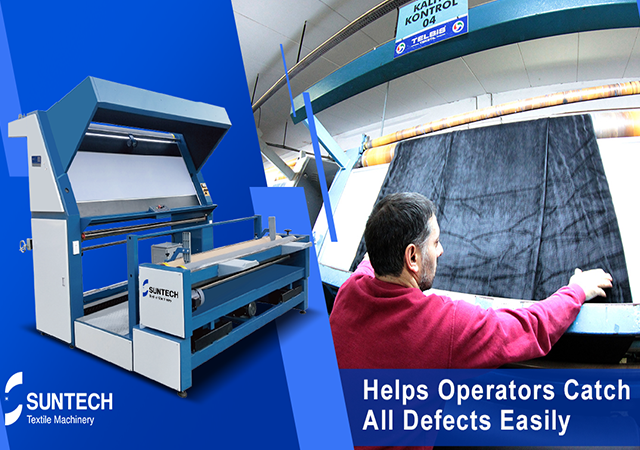In the dynamic landscape of garment manufacturing, the integration of cutting-edge technology is paramount for ensuring safety, reducing costs, and delivering high-quality products. Among these technological advancements, fabric inspection machine stands out as an indispensable tool, playing a pivotal role in enabling garment makers to streamline their production processes and produce superior quality items efficiently. From heightened accuracy to increased cost efficiency, explore the myriad reasons why fabric inspection machines are now considered invaluable investments in the garment industry.
The Vital Role of Fabric Inspection Machines
At the heart of the garment industry, fabric inspection machines emerge as pivotal components in the manufacturing process. These machines are designed to meticulously inspect fabrics, scrutinizing them for defects and irregularities that might compromise the quality of the final product. Equipped with cameras, fabric inspection machines capture detailed images of the fabric, allowing operators to identify and mark any imperfections promptly.
Types of Fabric Inspection Machines
Fabric inspection machines come in two main types: visual inspection machines and automatic inspection machines. Visual inspection machines rely on human operators to identify defects, while automatic inspection machines employ sensors for a quicker and more efficient defect detection process. The latter, being faster, is particularly beneficial for inspecting large batches of fabric in a shorter timeframe.
Benefits of Fabric Inspection Machines
The advantages of incorporating fabric inspection machines into the garment manufacturing process are multifaceted. Firstly, these machines contribute significantly to improving the overall quality of garments by identifying and addressing defects before they become part of the finished product. Secondly, the automation provided by these machines translates into time and cost savings, as they outpace human capabilities in the inspection process. Additionally, the use of fabric inspection machines helps safeguard workers from potential exposure to harmful chemicals present in defective fabrics.

Ensuring Fabric Quality: Fabric inspection machines play a crucial role in guaranteeing that fabrics are defect-free and of high quality, which is paramount for crafting superior garments.
Checking Color Fastness: These machines are also instrumental in assessing color fastness, preventing issues such as fading or bleeding in garments over time.
Detecting Flaws: Fabric inspection machines excel at detecting flaws like holes or tears, preventing the production of substandard garments prone to easy wear and tear.
Time and Cost Efficiency: By automating the inspection process, fabric inspection machines reduce the need for manual checks, saving both time and money for clothing companies.
Applications in the Garment Industry
Fabric inspection machines find extensive applications in the garment industry by subjecting fabrics to a meticulous inspection process. Running fabrics through rollers equipped with cameras, these machines capture images that are then analyzed by computers. Defects are logged, ensuring that only high-quality fabrics are utilized in the garment production process.
These machines are instrumental in upholding industry standards, as subpar materials can lead to dissatisfied customers and increased product returns. Visual inspection machines, utilizing light and magnification, are the most common type in the garment industry due to their cost-effectiveness.
In conclusion, the fabric inspection machine has ushered in a new era for the garment industry, providing enhanced control and accuracy in defect detection. Its ability to swiftly identify errors that would otherwise require manual labor not only saves businesses time and money but also ensures the satisfaction of end consumers. With its efficiency, precision, cost-effectiveness, and ability to analyze fabric quality specifically, the fabric inspection machine has become an indispensable asset for any garment company aiming to maximize profitability and customer satisfaction in today's competitive market.




